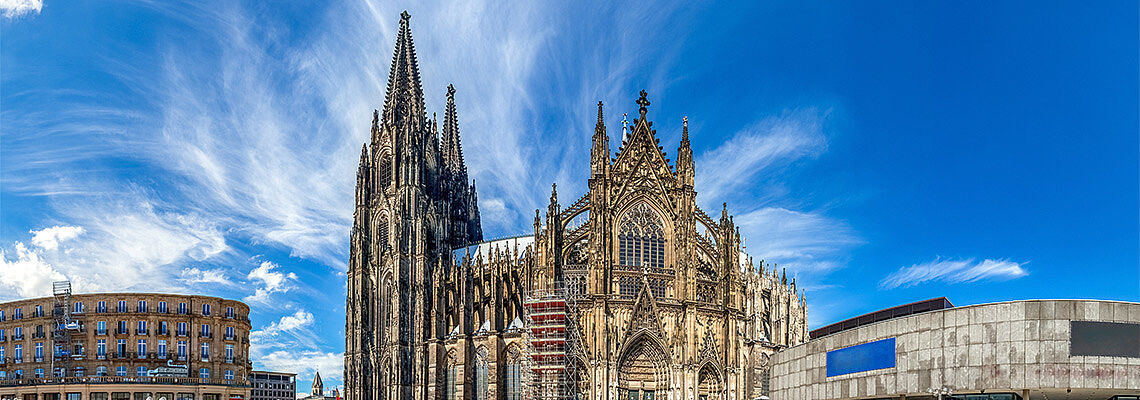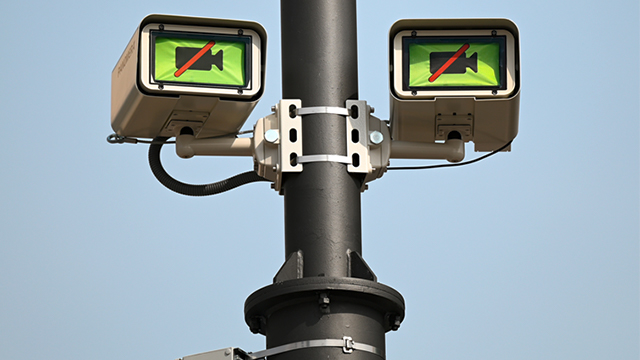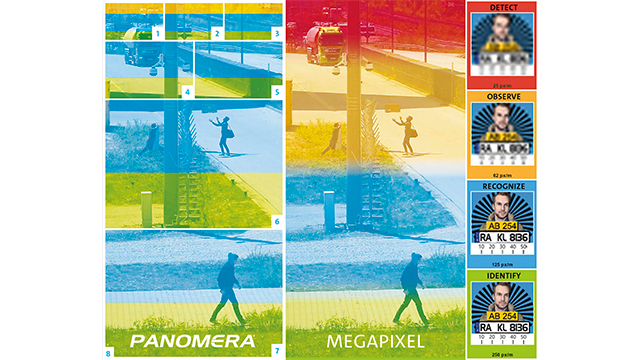Newsletter
Exclusive expert tips, customer stories and more.

Equipping public areas with video security technology is not an everyday task. Many city officials, police officers and authorities may only carry out a video surveillance project once or twice in their professional lives. Accordingly, many decision-relevant questions arise: “Which technology is best suited?“, “How does the installation affect the cityscape?“, “How do I moderate the balance of interests between data protection and security interests?“, “Which political stakeholders are there, and how do I integrate them?“
Modern video security technology is increasingly developing into an all-round instrument with a corresponding increase in complexity. Those in charge are therefore well advised to choose a technology concept that manages with the smallest possible number of cameras per area to be covered. The decisive factor is not so much the cost per camera, but rather the total cost of operating the system. And these costs – for infrastructure, cables, masts, mounting points and the labour time required for installation – are directly dependent on the number of cameras required. Then there are the costs for ongoing operation. Here, too, there is a linear correlation, for example with the number of operator stations and the ongoing maintenance costs. And the fact that fewer cameras have a positive effect on the cityscape is actually self-explanatory.
It also makes sense to take existing structures into account in the planning, e.g. by actively integrating existing cable networks or using existing mounting points. It is advantageous here to contact all “stakeholders“ – such as the heads of the various offices and institutions involved – as early as possible, to inform them about the project and thus identify synergies. This saves the budget and simplifies processes and decisions through “participation and integration“.
In almost every Safe City project, there is a balance to be struck between encroaching on personal rights on the one hand and increasing individual security on the other. In many projects, however, the mistake is still made of involving data protection officers too late in the planning process. Safe City projects are always implemented most quickly when all relevant interests are taken into account and weighed up as early as possible. This almost always reduces the project duration instead of extending it. Incidentally, this also applies to politics and citizens' initiatives: In many cases, the main reason for scepticism or rejection is simply a lack of information!
In addition to taking legal and political concerns into account, decision-makers should also pay particular attention to ensuring that the chosen technology already inherently guarantees maximum data protection. Manufacturers should be tapped to see how they take into account the “Security & Privacy by Design“ principles laid down in the GDPR and provide the latest technologies available today (such as permanently private zones or a technically enforceable four-eyes principle) in their product portfolio.
The operation of stationary video surveillance at demonstrations and rallies is increasingly being declared illegal by court. In most cases, cameras not only have to be switched off, but also deactivated in a “highly visible“ manner. Instead of covering the cameras, which is time-consuming and personnel-intensive, some manufacturers now also offer technical solutions for this, such as electric blinds that cover the lenses of the cameras and can be activated simply by pressing a button in the control centre.

Legal precedents explicitly state that the use of a video system is only permissible if it fulfils a specific purpose. This also and especially requires a consistent and, above all, precisely plannable image quality over the entire area to be monitored. Decision-makers would be well advised to question exactly to what extent the values defined in DIN-EN 62676-4, for example, can be maintained with the planned system over the entire area. This states, for example, that a resolution density of 250 pixels per metre (px/m) or more is usually necessary in order to be able to identify perpetrators beyond doubt in court. It should also be pointed out that, especially in the public sector, a certain sensitivity towards the origin of the systems used is advisable with regard to a “Made in Europe“ strategy – both for data protection reasons but increasingly also for ethical considerations.

High-quality cameras particularly suitable for urban surveillance manage to achieve the resolution density described above for 1,000 square metres or more per camera. So-called multifocal sensor systems, which combine the images of up to seven detail sensors and one overview sensor in one optical unit, are particularly well suited. The individual images are combined by software to form an overall image and can thus depict very large-scale contexts. The operators can then theoretically open an unlimited number of zoom areas in this overview image and view any details in high resolution. This means that a situation overview with a complete overview of significantly larger contexts is always available. The emergency services can react much faster and more effectively and – thanks to the many possible individual zooms – maintain an overview even in the most complex situations with many individual processes. Everything is automatically saved in high resolution, so that evidence that can be used in court is always available for every event. Depending on the area of application, a patented multifocal sensor system replaces up to 24 individual cameras. The 8,800 square metres of Cologne’s Cathedral Square, for example, are captured with just eight cameras at two mounting points in a resolution that can be used in court, without significantly altering the cityscape.
Whether technology, politics, infrastructure, ethics or data protection – video security projects in public spaces depend on a multitude of parameters. Decision-makers do well to have open, early communication with all parties involved and also to take a close look and seek advice when deciding on the technology. The issues of data protection and ethical responsibility also play a particularly prominent role. For decision-makers who want to find out more and are looking for collected practical tips from numerous projects, the Regensburg-based manufacturer Dallmeier has published the “Safe City Practical Guide“. In addition to many tips and background information, mayors, heads of public order offices, local politicians or police officers will also find a very concrete action guide and a questionnaire for their own project.
>The foregoing article first published in: Protector 5/2022
Do you have any questions? Or would you like to share your thoughts on this subject with us?
We welcome you to post your comments and remarks!